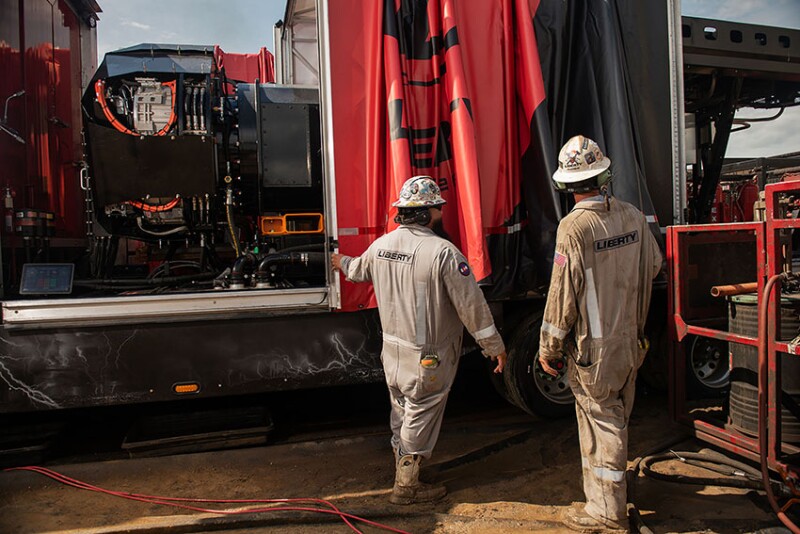The oil and gas industry is undergoing a revolution—an electric revolution. Driven by efficiency gains, cost savings, and reduced emissions, one area in which the transformation is clearly evident is the US onshore fracturing sector.
Interestingly enough, the fuel supporting this transition has been right under the industry’s nose all along: natural gas.
“Right now, about 70% of the pressure pumping fleet out there can use natural gas in one form or another, whether that’s Tier II [diesel-gas blend (DGB)], Tier IV DGBs, electric, or direct-drive turbines,” said Mark Chapman, senior vice president of oilfield service intelligence at Enverus.
Chapman added, “A new trend we’re starting to hear more about is using 100% Tier IV reciprocating engines—but burning 100% natural gas. This allows them to get the same benefits as electric, except without the need for whole power generation systems.”
Electric fleets, or e-fleets, have become popular in recent years among US shale producers, but the term is somewhat misleading, as they are actually gas fleets, explained Roy Aune, vice president of advanced equipment technologies for pressure pumping provider Liberty Energy.
“People talk about ‘e-fleets,’ but we should call them ‘g-fleets.’ Virtually all electric frac pumps are driven by a gas engine on site. It’s either gas converted to electricity, which is then converted to mechanical and hydraulic energy, or something similar.


